Light and medium remotely controlled combat modules. New Western manufacturers
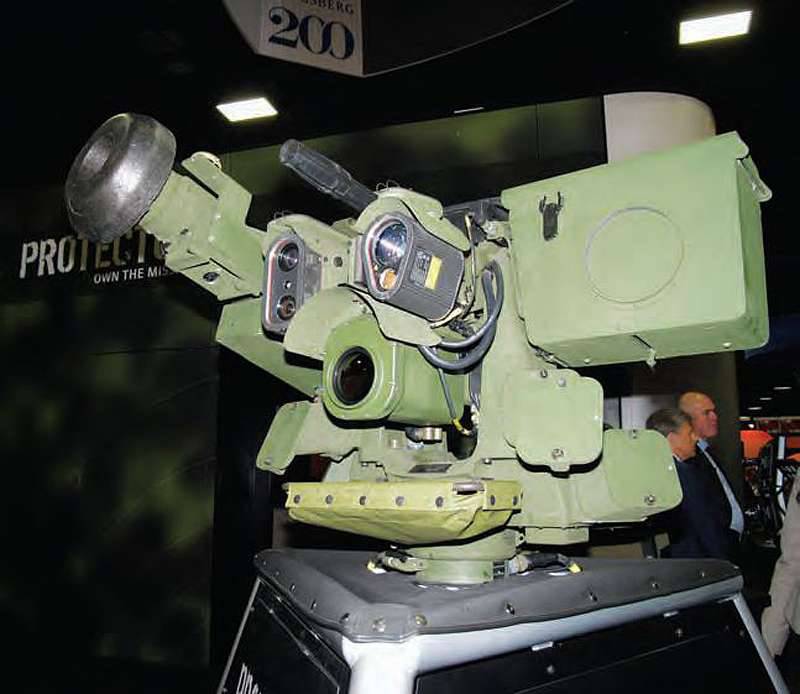
Konsberg's offer for the US market for an improved version of the M151 module includes new sensors and Javelin missiles
Remotely controlled combat modules (SDMs), armed with light and medium weapon systems, are becoming increasingly popular, since the operator in firing is not endangered by a response fire impact. Compared with turret machine guns, most of the double-action anti-aircraft guns are now stabilized and, therefore, allow high-precision fire in motion.
Recent development trends in the field of remotely controlled combat modules indicate the increasing popularity of the configuration of the "module on the tower", which allows you to provide basic combat Tanks (MBT) means of proportional response, conducting a circular return fire. In both marine and airborne applications, along with simple installation, stabilization is a must.
The article describes land and sea systems of caliber up to 20 mm.
With more than 3200 M151 modules installed on the Stryker armored vehicles of the US Army (first delivered in 2001 year; more than 11000 units were ordered as part of the Crows module contract), Kongsberg is the main supplier of DBMS in the US market. This module has become a benchmark in the light category, although its mid-caliber version is currently also gaining momentum in the market. Considering the possible replacement of previous M151 models installed on the Stryker (it is also the main weapon of these 8x8 machines and their many variants), Kongsberg presented a demo at the AUSA 2015 exhibition. He borrowed numerous components from the Protector Nordic module, which is currently the most advanced version. Among these components can be called the KPS VIS 95 surveillance system installed on the right, which includes three cameras, the central one of which has a fairly wide field of view 95 °. The Kongsberg Batram 1550 laser rangefinder is mounted on the left, while the imager is installed under the machine gun. The Flir 4000 thermal imager, proposed in this version, has detection, recognition and identification ranges corresponding to the Javelin anti-tank missile ranges installed to the right of the machine gun. The box with cartridges is installed naturally on the left. The Kongsberg demonstration model features a modernized fire control system, as well as a thin LCD display with significantly higher resolution. The company Kongsberg US is closely monitoring all proposals for the replacement of weapons in the US Army.
The basic version of the Norwegian module M151
Although the United States remains Kongsberg Protech Systems' sole major customer, the Protector module has been sold to 16 more countries. The company currently offers its products to many countries, while constantly updating its range. In the last couple of years, new options have been added to the company's product line, for example, Protector Nordic and Protector Dual RWS. You can add a coaxial machine gun to the Nordic DBM, and two operators can work with it. The ship variant of Sea Protector also attracts interest: deliveries to the American the fleet were completed in early 2014, after which deliveries to the Norwegian fleet began. This ship’s version has improved stabilization, it is easily connected to the existing operator control consoles, in addition, the sea rules of warfare are integrated into it.
To meet the demands of some customers on working with the JMA from several workstations, Kongsberg has developed an advanced fire control solution that allows several operators to control one weapon module within a specific set of combat rules (this solution is also part of the CV90 armor upgrades). The Protector module is also offered for fixed installation and in this case the above solution can be implemented so that several operators can work with several SDM Protector. This multi-user fire control solution, developed in accordance with the Generic Vehicle Architecture standard, can be integrated into existing systems or integrated into new systems.
If the existing Protector provides the ability to install additional weapons systems, as well as an excellent sector of shelling, close to the machine’s shelling sector (since this module has a declination angle of 20 °), the overall height of the system in combination with the machine’s height can create difficulties during transportation or in some cases partially close the crew review. That is why a new version is being developed with the aim of minimizing and even eliminating these shortcomings.
Kongsberg also actively integrates new executive systems and new sensors, including new temporary defeat systems. In recent years, Kongsberg has integrated and delivered non-lethal systems of two types to different customers who needed laser and light blinding devices. In order to improve the effectiveness of the defeat, an 40-mm automatic grenade launcher was added to the DubSM Protector, which allowed expanding weapons range of shooting modes, including modes of mounted fire and air blasting. In combination with the high probability of hitting from the first shot, the Protector module gives a significant superiority when firing on light vehicles and manpower in shelters.
The Javelin missile launcher, fully integrated with the combat module, was also developed and demonstrated; it is currently being supplied to some Protector customers. The rocket provides rapid destruction of targets at close and long distances. It is also possible to install missile launchers of other types of missiles in the event of market changes in the market and customer requirements. The Protector touch kit module may vary when installing other missiles. The Nordic VIS95 daytime camera, for example, provides vehicle identification at a distance of more than three kilometers. Kongsberg also supplies systems with high-performance thermal imaging cameras that have similar identification features and integrated laser rangefinders and infrared indicators.
The Norwegian fleet receives its first Sea Protector module, which is a ship version of Konsberg land modules.
FN Herstal moved its FNder concept from land to sea, creating the Sea deFNder module, which was shown at Euronaval. He may be armed with 12,7-mm machine guns and already has a customer (not yet opened)
Belgium
Using the experience gained with its two SDMs for ground-based machines deFNder Light and deFNder Medium, the Belgian company FN Herstal presented at the Euronaval 2014 exhibition a new module. The system, designated Sea deFNder, is designed for installation on ships, but is largely based on the ground version and retains a universal cradle that can accept various weapons, ranging from 5,56-mm FN Minimi to 12,7-mm M2HB-QCB or M3R, not to mention already about 40-mm automatic grenade launchers. It is clear that Sea deFNder is optimized for operation in a saline aquatic environment: its surfaces have a special coating, all vulnerabilities are sealed and sealed, in addition, special ship biaxial gyros are installed. The turret has already passed qualification tests in a probable combat use environment. The module is armed with a machine gun M2HB-QCB, has a combat weight of less than 205 kg with 200 cartridges. Sea deFNder does not penetrate the deck, although the module may have different heights depending on the desired sector of fire. The vertical guidance angles are -40 ° / + 70 °, the maximum vertical transfer speed of 60 ° / s, and the maximum rotational speed of 90 ° / s. The aiming module includes a day CCD camera, while the thermal imaging channel can provide both a cooled and uncooled thermal imager. The Sea deFNder module has already found its first customer (not disclosed, as well as the contract value), which brought the number of deFNder DBMSs ordered to more than 1300 units.
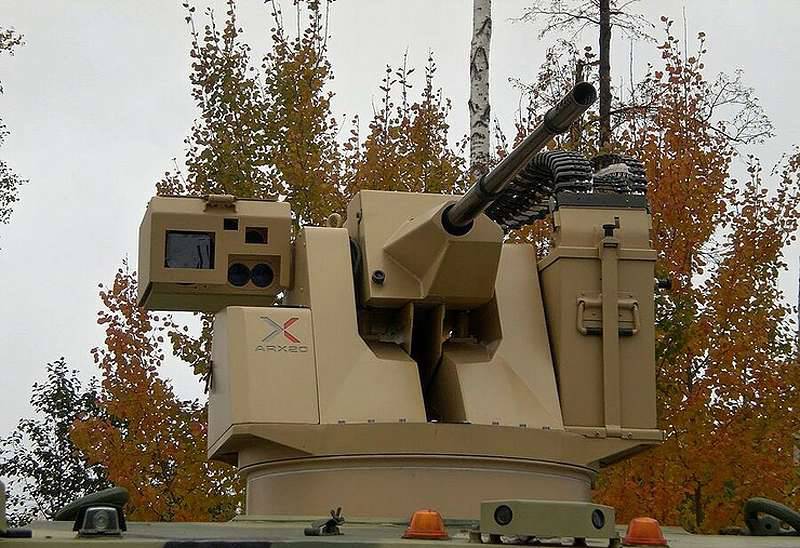
For the current customer from the Middle East, Nexter has completed a number of improvements in its ARX20 module, including a deeper shell container containing more shots
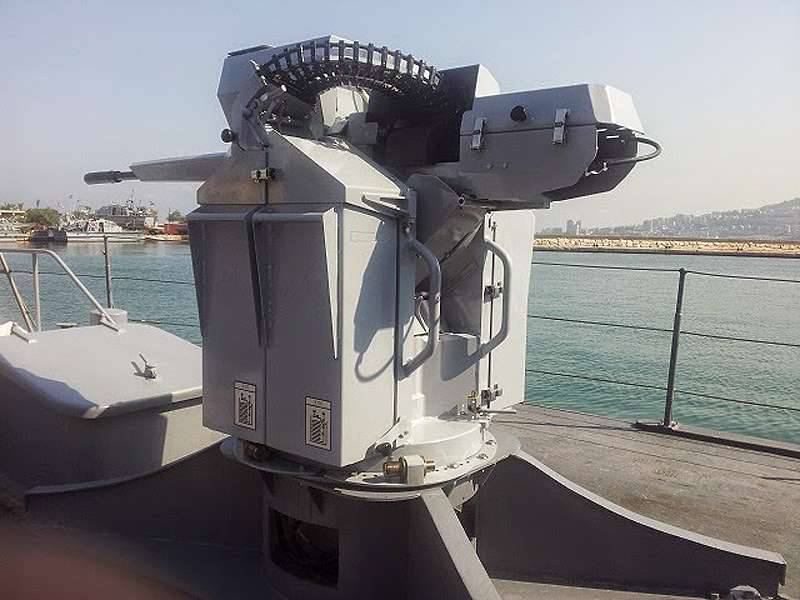
The Narwahl module, which can be armed with 20-mm guns of two different types, will be in service with France, Gabon and Lebanon
France
The Nexter ARX20 module was designed to meet the need for a more powerful stopping power, because it is well known that a pair of 20-mm projectiles cause more damage to a vehicle than a whole line of 12,7-mm bullets. This was demonstrated at the Canjuers test site in 2011, where two ARX modules were tested, one armed with M621 with a cam for NATO 20xXNNXX mm, mounted on an Aravis machine, and the second with an M102 gun under 693XXNNX mm, a projectile installed on an armored personnel carrier on an armored vehicle with an M20 cannon for an 139XXNNX mm machine installed on an armored personnel carrier and mounted on an armored vehicle with an M20 cannon for an 20xX13 mm machine installed on an armored personnel carrier and mounted on an armored vehicle with an M693 cannon for an 20xX50 mm machine mounted on an armored personnel carrier and mounted on an armored vehicle M20 under 20xXNNX mm mm. Due to financial difficulties, France was unable to acquire ARX7,62 and deploy them in Afghanistan, and in this regard, some VAB machines are equipped with a single T100 / 200 turret armed with a M200 cannon. The first commercial success of the ARX300 module came from the Middle East as part of an order for Aravis machines. Although the company Nexter never called the customer, the open secret is that it is Saudi Arabia. The contract included 330 combat modules, which received a number of improvements over the standard ARX20. First of all, the 2014-mm ammunition and 12-mm ammunition ammunition were increased from 20 to 6 and from 6 to 2014, respectively. The buyer also ordered a system for collecting fired brass sleeves and cartridge belts, plus an improved thermal imager from the French company Exavision, which corresponds to the long-range nature of the main armament. These improvements have increased the weight of the combat module, which is now XNUMX kg above the roof and to which you also need to add XNUMX kg to the control console installed inside the machine. At the end of October XNUMX, Gabon issued a contract for Aravis XNUMX machines as a national contribution to the UN Stabilization Mission in the Central African Republic (MINUSCA). The towers will have the exact same configuration, as mentioned above, except for the UN white color. The firing tests of the ARXXNUMX UAV installed on the Titus XNUMXxXNUMX armored personnel carrier were carried out in November XNUMX.
Gabon also ordered the installation of Narwahl 20A from Nexter. This ship-borne projectile, armed with a M621 gun, will be installed on the coast guard boat OPV50 ordered at the end of October 2014 at the shipyard Piriou. The boat length 58 meters will be delivered in the middle of the year 2016.
Lebanon became the first foreign customer of the Narwahl module, although the number of systems and the ship on which they will be installed is not disclosed.
The same combat module, but in the configuration of the Narwahl 20B, armed with the M20 693-mm cannon, was adopted by the French marines. Compared with version “A”, version “B” is heavier (470 kg versus 390 kg) due to heavier weapons and ammunition. The first Narwahl 20B modules were installed on board the Normandie (the second French frigate of the FREMM class) and will be installed on the next ship in the future. The first ship of this class, the Aquitaine, should receive two Narwahl gun turrets in 2017 during its first repair. Narwahl 20B will provide protection from high-speed boats and boats. Two towers will be installed on the left and right above the helicopter hangar. Recently, France decided to upgrade its Mistral class amphibious assault ships. On the Mistral, Tonnerre and Dixmude ships, the current handguns will be replaced with remote-controlled modules, which will take the same positions, in the stern on the right and left of the bow. Nexter has ordered more than 30 Narwahl shipboard installations from national and international customers.
Italy
The Italian army ordered Hitrole Light combat modules from Oto Melara. After the delivery of the 81 system, which was installed on Iveco DV Lince 4x4 light armored vehicles, the Italian army ordered an option from 20 systems in the same configuration. An order for another 80 modules, details of which are currently being discussed, should be finalized soon. The Italian army is also considering the possibility of installing Hitrole Light on the Iveco Orso 4x4 machine, which comes into service with the engineering units as part of the route clearance kit Route Clearing Package (it was already decided to install these kits on Freccia mortar transporters). Hitrole Light will be installed on the new Centauro armored vehicles in a “module on the tower” configuration. Also developed a marine version of Hitrole Light. In this configuration, a heavier Hitrole N achieved some success due to its reloading configuration under deck (for ground-based applications, this configuration is not considered mandatory, although it can be implemented if remote control of main armament is required. Several Hitrole remote-controlled combat modules were sold to the Italian army and installed on armored vehicles Puma 6x6).
At Euronaval 2014, Oto Melara announced the signing of a memorandum of understanding with UAE Siham Al Khaleej Technology (SAKT) for the development, marketing and co-production of a new version of Hitrole, armed with a more powerful and long-range triple-barreled 20-mm Gatling Gantling M197 gun from General Dynamics (also installed on the combat helicopter of the Italian Army Aviation AW129 Mangusta). The goal of Oto Melara is to create a system with increased long-range and lethal effects that could cope with the increased firepower of the enemy, while the standard CCD Hitrole remains in the police and coast guard. The transition from 12,7 mm to 20 mm guarantees a range of two kilometers, while the mass of explosive delivered to the target increases almost threefold in a two-second queue, and the kinetic effect at a distance of one kilometer approximately doubles. Given that there is often a problem with the underdeck space, Oto Melara has created a non-penetrating combat module with an intermediate element in order to constructively connect the rear-mounted magazine containing 750 20x102 mm shots to the gun itself. Besides the fact that in this intermediate element you can install the power supply on 24 volts, it also serves as an element that increases the height, which allowed us to get the declination angle 30 ° (the maximum angle of vertical guidance is 75 °). This option weighs 600 kg without ammunition and power supply, they add respectively 250 kg and 70 kg.
However, the design of the module allows you to get a different configuration with the ammunition cellar, located below the deck. The ammunition store, which is interesting, has a biasing device that allows you to maintain the traction force of the gun at the same level, whatever the number of shots left. The gun mount is fully stabilized; The maximum acceleration of the flip in azimuth and elevation is 250 ° / s, the maximum flip speed in elevation is 110 ° / s, while in the sector ± 155 ° the maximum rotational speed is 75 ° / s. The optical electronic kit is customized to the customer’s requirements, but the basic configuration is the same as that of the Hitrole module. The day channel is provided by a local camera with a field of view 23,6 ° and x34 magnification, with PAL and HD-SDI outputs, and an 1,55-µm Vectronix LRF 3000 laser rangefinder with a 6 km thermal imager and a Sagem Matis SP thermal imager are also installed. The Hitrole 20 module with digital architecture and target tracking system can be controlled from a separate console or integrated into a ship-based battle management system at the request of the customer. It also discusses the installation of alternative weapons, including the General Dynamics M61A1 Vulcan cannon, which Oto Melara has tested with the aim of possible installation on the C-27J Spartan aircraft. This six-barreled gun has a 4000 firing rate per minute compared to 750 rounds per minute M197 or ATK M230 LF chain-driven cannons. Oto Melara and SAKT will promote the new system based on their market spheres of influence; production will be conducted both in Italy and in the United Arab Emirates.
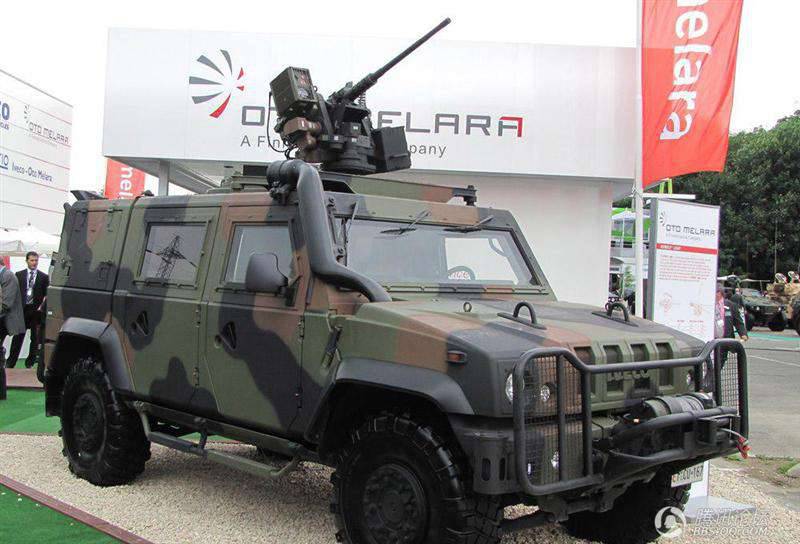
Hitrole Light (the photo is installed on the Lince armored car of the Italian army) will have to be issued new orders soon
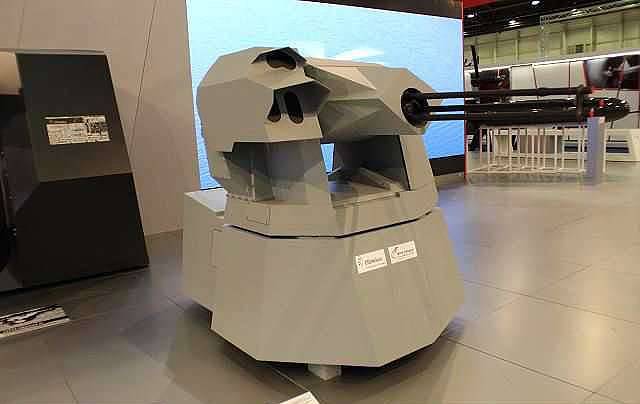
Shown at Eurosatory, the Hitrole 20 shipboard with a Gatling gun, developed by Oto Melara in collaboration with Siham Al Khaleej Technology from the United Arab Emirates
The ZSMU-1276 module, developed by the Polish company ZM Tarnow, is available in two versions: with an external cartridge case (below) and with an internal feed that allows for reloading inside the machine
Poland and Romania
Polish company Zakłady Mechaniczne Tarnow, currently part of the new holding PGZ mm production itself ZM Tarnów; Both modules have a feed tape on the right side. Available in two versions: ZSMU-1276 A12,7 with external ammunition boxes on the 99 2000-mm cartridges or 7,62 51-mm cartridges and ZSMU-1276 C3, equipped with ammunition feed tray, which goes under the armored roof that allows for safe reloading inside the machine. The A150 model of the non-penetrating 12,7 type in the body is lighter than the version with external ammunition. Model C250 weighs with 7,62-mm machine gun 1276 kg or 1-mm machine gun 3 kg. The optocoupler kit is installed in the middle and consists of a day camera, a thermal imager and a laser rangefinder. The fact that ZM Tarnów machine guns supply ammunition to the right (in the style of Soviet-era machine guns, and not to the left, according to NATO standards), allows the company to offer combat modules compatible with Soviet-era automatic weapons, which are still numerous. Up to six 28-mm smoke grenade launchers can be installed on the module. The ZSMU-1 module, the development of which began in 12,7, achieved some success, because the Polish army chose the A169 variant, armed with a UKM-7,62, C machine gun, to be installed on the Rosomak 152X81 armored vehicle version.
First shown at DSEI 2013, the Anubis module of the Romanian company Pro-Optica has since been certified by the Romanian Ministry of Defense. This SDS can accept 12,7-mm and 7,62-mm machine guns with left-handed ammunition in accordance with the NATO standard; elevation angles are + 60 ° / -20 °. Anubis stabilized on two axes weighs 135 kg without arms and ammunition. Anubis can also serve as a surveillance system, as it is equipped with a sensor kit that includes a day camera on 0,4 megapixels with x30 magnification, a thermal imager with 17 μm pitch, 640x480 matrix and x6 magnification, and a laser rangefinder with 5 km distance. Options include ballistic protection, target tracking function, shot counter, image stabilization, calculation of target coordinates and integration into the battle management system. An 40-mm automatic grenade launcher can also be added. Pro-Optica is in the final stages of negotiations with an unnamed customer, who must order 50 modules with deliveries in 2016 year.
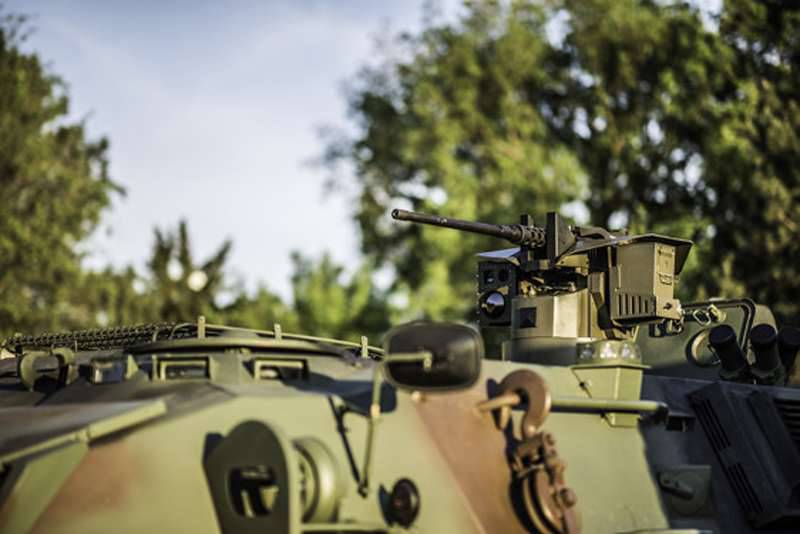
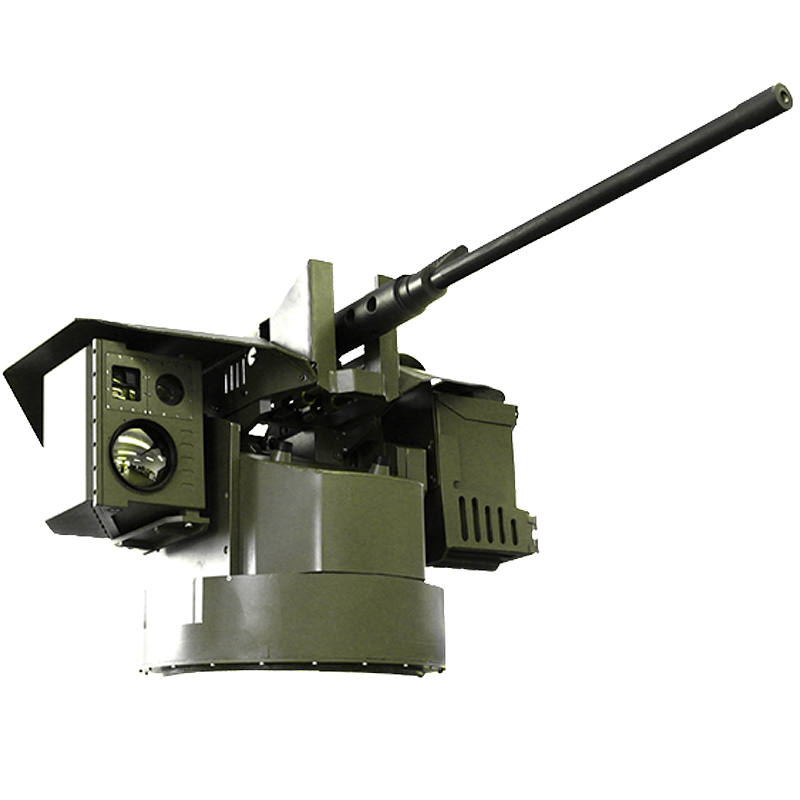
Designed by the Romanian company Pro-Optica, the Anubis module is designed for Western machine guns with ammunition supply on the left.
IMI does not disclose which of its Wave models has been selected for the border security project.
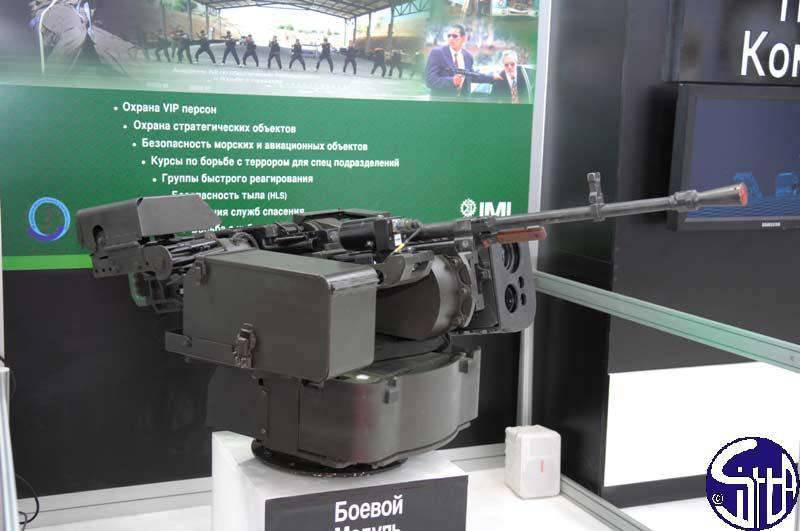
The IMI Wave 300 module is designed for machine guns of typical Soviet design, with the right ammunition feed. A contract has been received for this DBMS, the company will supply its systems to an unnamed customer.
Israel
Israel Military Industries has two light modules in its portfolio under the Wave designation, while the third at the prototype stage is waiting for its first customer. Both models can accept 7,62 or 12,7-mm machine guns, while the Wave 200 variant is intended for Western armament, and the Wave 300 variant is intended for the installation of Oriental type machine guns, such as PKT or NSVT. One of the Wave models was chosen by an unnamed country to protect borders (according to IMI, the contract includes a “decent number" of systems for command and border checkpoints). Despite the fact that in recent years, numerous companies have been promoting their SDMs for such purposes, this is probably the first system designed to ensure border security. IMI also received a second order, but this time, on the ship version of the Wave 300N for installing weapons with the right feed. And here the buyer remains unknown, although the advance payment is received, and therefore we can hope for a successful prototype.
Using the latest developments in this area, Rafael has added another option to its portfolio, which was designated Samson Mini MLS. The module installs one automatic weapon system, and the company views it as part of the Samson Mini family, although it is based on the Samson Dual external support. This SDS, however, can take the second weapon system in the form of a missile launcher (missile launch system - MLS, hence the letter in the designation). The module itself and its multisensory kit are stabilized. The module can be installed on any lightly armored combat vehicle, new or upgraded, without any modifications. The module developed by Rafael can take up arms from either side, since the ammunition box is installed at the bottom of the module, for example, you can install either 12,7-mm M2HB or 14,5-mm KPVT in the module. 40-mm automatic grenade launchers can also be installed, as well as machine guns of smaller calibers. A launcher with two Spike LR (Long Range) multipurpose missiles is mounted on the right. The rocket homing head guarantees maximum accuracy on the final part of the trajectory, and guidance over fiber provides two-way communication, which allows the shooter to see the target until the very last moment, and also to redirect the missile in case of a change in the situation.
The sight is independent of the corners of both weapons systems, which allows observation even when the machine gun is raised to the maximum angle (machine gun corners + 50 ° / -20 °; rocket launcher + 45 ° / -5 °). The Samson Mini MLS currently includes various additional systems and functions, such as a laser range finder, target tracking, advanced combat control system, remote arming and ammunition counter. Both the commander and the shooter can work with the OOBM, and they can also determine the prohibition zones. In the event of a power failure, manual operation is possible. The module operates at a voltage of 24 volts, the average current consumption is 20A with a peak value of 40A. The lower part of the tower has a ballistic protection, which also closes the ammunition. The EPRS weighs 440 kg with two 9 kg missiles and 150 cartridges (their number can be increased if the vehicle can take on extra weight). Up to eight smoke grenade launchers can be installed on the module. Rafael is also ready to integrate other types of anti-tank missiles. Orders from an unnamed buyer have been received for the Samson Mini MLS module and are currently being mass-produced.
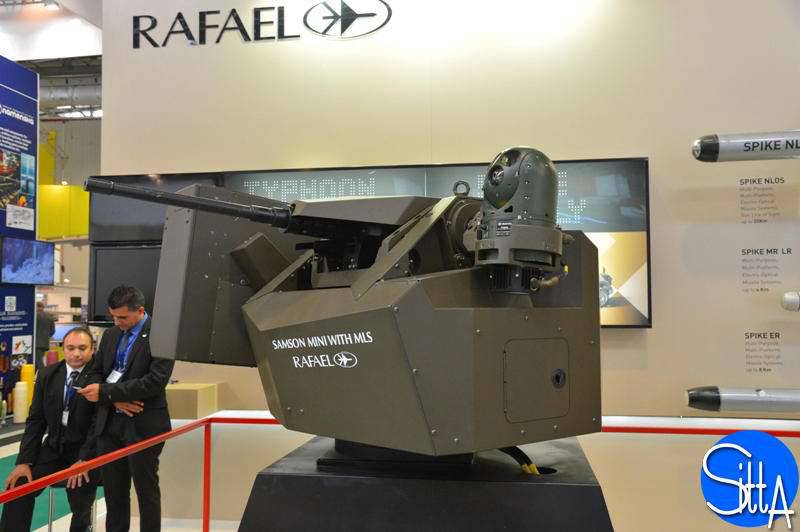
The latest addition to the Samson family is the Samson Mini MLS module, which can receive two Spike-LR rockets
Corced shipboard, developed by Emgeprom, Brazil, ready for production
Brazil
In Brazil, the state-owned enterprise Empresa Gerencial de Projetos Navais (Emgepron), working closely with the command of the Brazilian Navy, has developed a Corced ship gun mount armed with an M12,7 2 or 7,62 mm FN MAG machine gun. The stabilized module weighs 170 kg. The cartridge box, mounted on the left, holds 300 12,7-mm cartridges or 460 7,62-mm cartridges. On the right is a container with an optoelectronic daytime camera with x23 magnification, a thermal imaging camera is offered as an option. Corced OWDM, operating on 115 AC volts or 24 DC volts (maximum 60 amps on 24 volts), is designed and ready for mass production.
Materials used:
www.kongsberg.com
www.fnherstal.com
www.nexter-group.fr
www.finmeccanica.com
www.zmt.tarnow.p
www.prooptica.ro
www.imi-israel.com
www.rafael.co.il
www.ares.ind.br
www.wikipedia.org
en.wikipedia.org
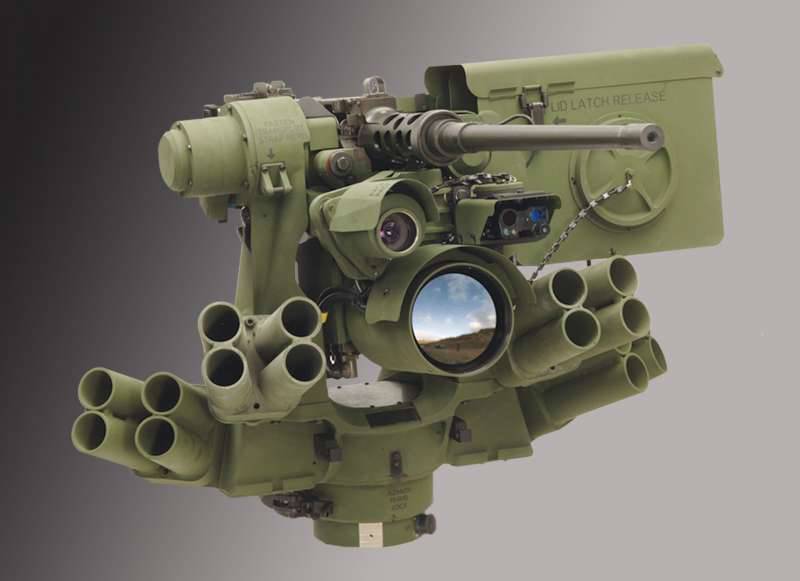
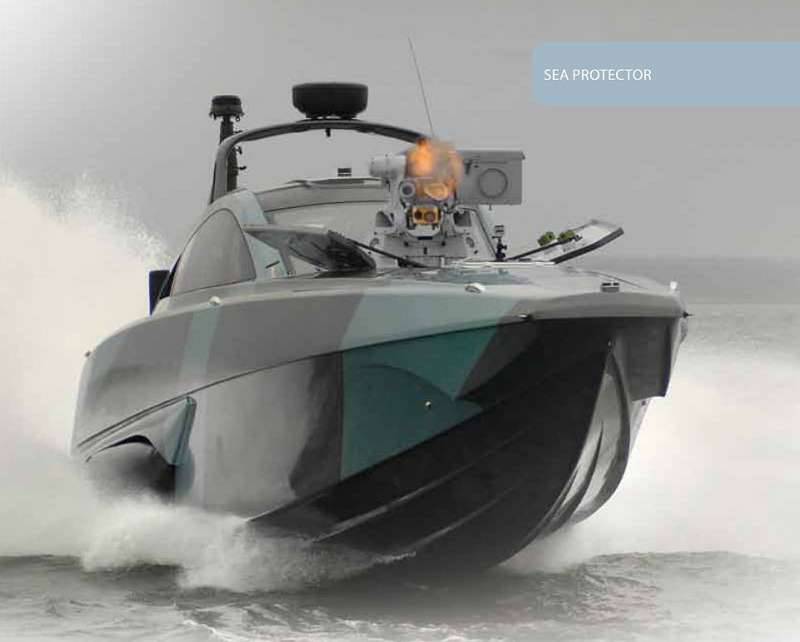
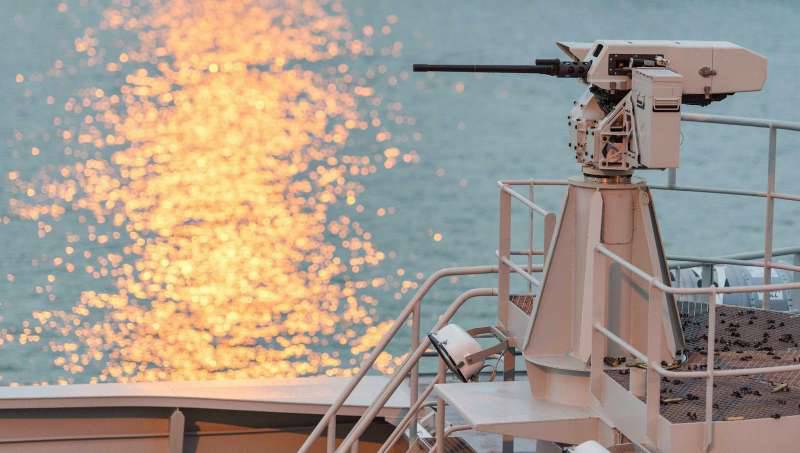
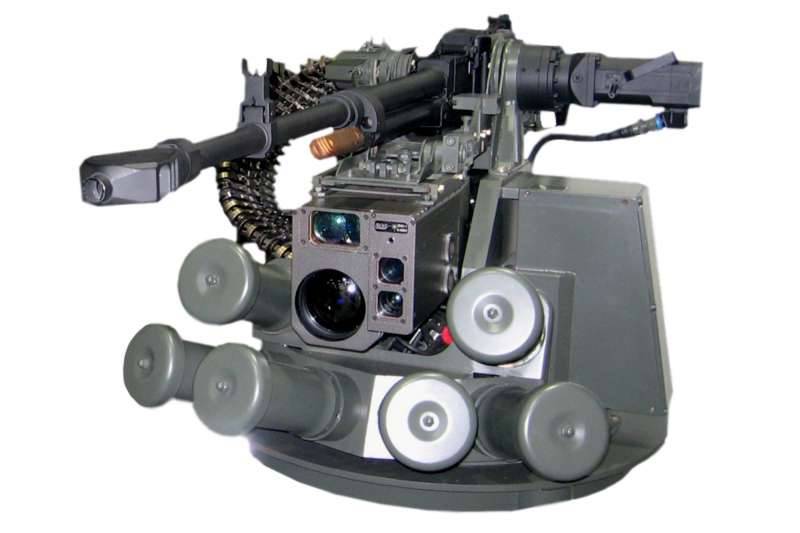
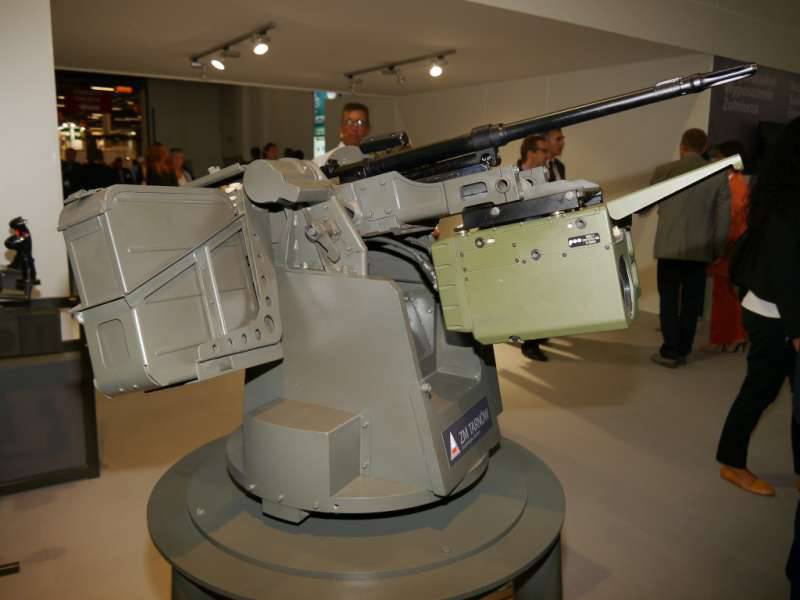
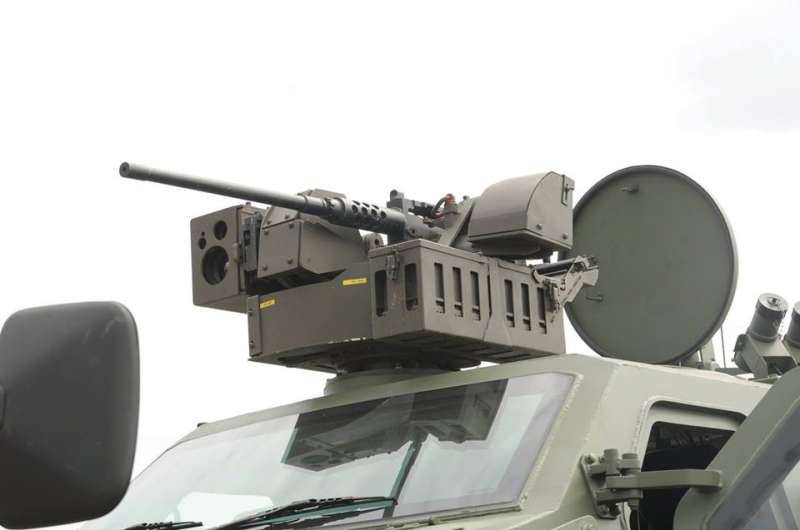
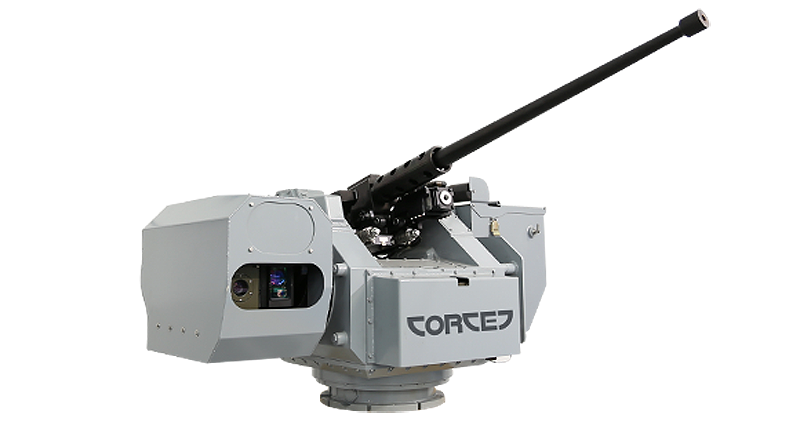
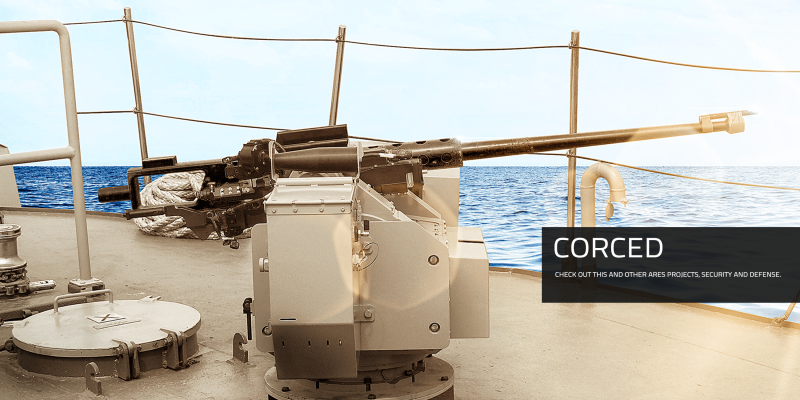
Information